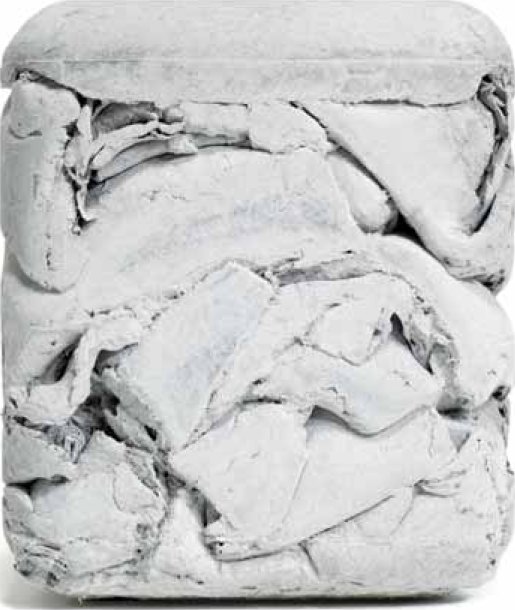Hardcore was the name of an exhibition of concrete at the Royal Institute of British Architects in 2002, its subtitle was ‘concrete’s rise from utility to luxury’. It was a unique exhibition that highlighted concrete’s huge, but often unknown, range of associations. It explained how, over the last 100 years, concrete has had a huge effect on our environment and that it is constantly being redefined in both its functions and associations.
Cement is one of the main ingredients of concrete and occupies its biggest use. It is a mixture of limestone, clay and shale. By adding water the powder is set and can be used for moulding. If too much water is added, the hardness of the cement is reduced and if too little water is added, the chemical reaction does not fully take place and the cement will not harden. The most common form of construction cement is Portland cement. When set it forms a stone-like material and its biggest application is in the construction industry.
Designers such as Alexa Lixfeld have helped to reposition the perception of concrete from utility to luxury through a range of tableware. The Swiss designer Nicolas le Moigne has collaborated with fibre cement company, Eternit to create ‘trash cubes’ a project that uses raw, recycled material to produce new stools.
Image: Trash Cube by Nicolas le Moigne with Eternit

Key features
•Exceptional compression strength
•Different aggregates for a range of effects
•Colour can easily be changed
•Fairly low-cost tooling
•High labour cost
Sources
After water, cement is the most used product on the planet, China produces half of all cement.
Cost
Relatively low cost, though production costs are high.
Sustainability issues
According to an article in The Guardian newspaper in 2007 ‘cement is emerging as one of the major obstacles on the world’s path to a low-carbon economy’. This statement is based on several factors of cement production, including the heat and coal used to supply kilns during the production of cement and the release of carbon dioxide (estimated to be 5 billion tons annually by 2050), a by-product in the extraction of limestone. There are more and more companies who are looking at recycling concrete as rubble. It also contains chromium, which contributes to its toxicity as a skin irritant.
Production
Production of cement is nearly always based on casting into moulds, with Portland cement having a setting time of six hours and a compressive strength that increases and reaches a maximum strength over a period of weeks. Ciment Fondu®, another form of cement, sets much faster.
Typical applications
The biggest application for cement is in concrete, and the majority of concrete is used for building applications. Concrete is a mixture of cement, sand and an inert aggregate, which can be any number of materials but is usually small stones. However, various artists and designers have been exploring new possibilities for the material and new applications have been discovered that include jewellery, furniture, kitchen work surfaces and tableware. Cement is also used in other forms of construction, for example in grout.
Derivatives
–White and grey Portland cement
–Ciment Fondu®. Compared to Portland cement, which is based on silica and limestone, Ciment Fondu has a range of advantages. It can be used to form far more complex shapes and to withstand temperatures up to 2000ºC (3632ºF) compared with 500ºC (932ºF) for Portland cement. It is also much more durable. It is a superior cement and is available in rich chocolate coloured and dark grey tones, or even a highly polished white. It offers the designer far more potential to experiment with the decorative and aesthetic qualities of cement than Portland cement does.
–Eternit is a fibre-based cement that has recently been explored through a number of design projects. It is 100% recyclable.
| + | – |
|
–Incredible compression strength –Easy to cast –Can achieve a range of colours and effects –Recyclable |
–Energy intensive to produce –Environmental concerns –High production costs |
